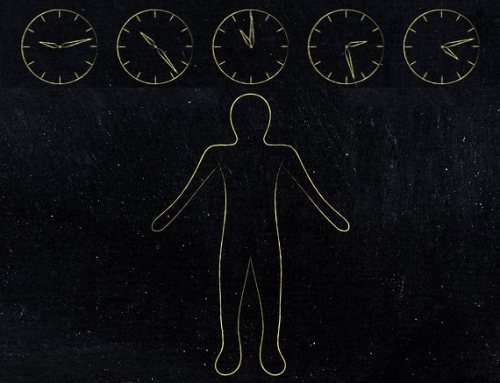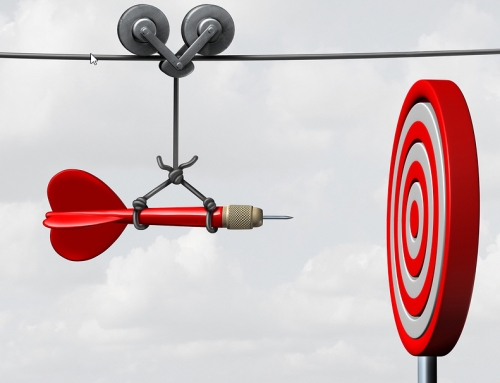On turning 40
Since my teenage years, I’ve always tried to do some kind of exercise. In those days, I’d go running with my father, go biking on the streets of Baltimore County and go swimming at the pool where I worked as a lifeguard. While my father was – and in fact still is – winning 10k races for his age group, I don’t recall any particular rigor to my own fitness activities.
In fact, I think that this attitude towards exercise largely stayed with me through to my thirties. I did independent exercise several times a week, but without real thought or rigor. It was a tool to deal with stress and to feel reasonably good about my health.
By the time that I entered my forties, I began to feel like my attitude towards exercise and fitness wasn’t good enough. While by all measures, I was just fine – a mere ten pounds over my college weight and reasonably fit, somehow the 40-year marker made me think harder about my fitness and health, more than anything else ever has.
I’ll return to fitness in my forties momentarily.
Progression towards smaller project based work
I became a freelancer back in 2008 and, living in the shadow of DC, quickly found lots of user experience work in the Federal government space. In fact, my FEMA work – which started in 2009 – grew into my biggest Lebsontech project, involving not only a lot of my time but that of staff and subcontractors as well.
But 2013 – the year I turned 40 – was shadowed by Federal budget sequestration. My Federal work started declining as did the budget for usability and user research on the FEMA contract – which ended in 2014. While I always maintained a stream of commercial, non-profit and state government work, without the Federal work, I didn’t have enough on my plate to stay busy and scrambled to shift my focus away from Federal government.
In retrospect, while the scramble to find enough work was not fun, that shift was a very good thing. Not only did it force me to really diversify my workstream, but particularly with the decline of a massive contract, it led me to recognize that a collection of smaller projects across diverse sectors and industries is inherently safer than any one project that exceeds 50% of my time for too long.
Fitness meets project work
As my scramble for new smaller projects collided with my 40-year fitness insecurities, a funny thing happened without me quite realizing it: I started moving along the path to have fitness itself – my health, my body – become a work project, subject to all the rights and priorities of any work project.
A good project starts with information gathering
As I entered my fourth decade, I began to feel that my fitness level wasn’t good enough, but I wasn’t sure how to proceed. So I hired a personal trainer who came to my house over a series of weeks and taught me about what I should know. Sure I could have downloaded an app or watched a myriad of videos, but like any information gathering process, there is something about the in-person experience that adds vibrancy and value.
My advice: In my field of user experience, UX professionals constantly need to be prepared to challenge assumptions about what they know and what they assume they know. Like any new project, don’t assume that your knowledge is necessarily correct or thorough. Gather critical and applicable fitness information first – whether if by reading, by listening or something in person.
Keep a timesheet, update it regularly
As a freelancer working on multiple projects simultaneously, keeping track of my time is critical. While there are a variety of good web-based tools out there for freelancers and small businesses to keep track of their time, I prefer to use Excel. I’ve developed my own time tracking spreadsheet and enter my time regularly for each project I work on in any given day.
In addition to my actual project work and my non-billable time, my spreadsheet has one extra project: my exercise. I enter 1 hour for each day I exercise – be it a run on the trail near my house, a swim at the local community pool or some other exercise at the gym. In truth, my workouts usually last from about 45 minutes to 75 minutes, but the hour marker also lets me see most easily how many days I exercised each month.
My advice: Whether or not you keep a timesheet at work, consider your own “timesheet” for exercise to help frame your activity with a mindset of a work project.
Track critical data and review it regularly
As a user experience researcher, I know that it’s critical to have a handle on analytics and other data sources to help frame other research activities that I may do. Just like I try to integrate and stay on top of these other data sources with my projects, I supplement my activity tracking by recording what I eat with the MyFitnessPal app. While I’ll still eat reasonably healthy without it, awareness of what I’m eating, as well as a “business requirement” to document my food intake raises the bar and helps me to stay honest.
My advice: Tracking time is important, but tracking data like food intake is just as important when that awareness of the data – food and nutrition – makes you a more careful decision maker about your health.
Agile fitness
Pretty much every project I work on these days is Agile or Agile-ish. The project team doesn’t start at point A with a single goal to proceed to point B as the end. In fact there is often no end really, but rather a series of iterations, where the product is improved bit by bit with constant evaluation after each incremental improvement.
My goals aren’t huge – simply to be a little bit healthier, a little more fit than the month before. And it’s working. I can run and swim further and faster than I could five years ago, with more muscle and a lower overall body fat percentage. As I continue through my fourth decade, I want this to continue as a series of minor iterations.
My advice: It’s fine to ultimately aim high, but on a day to day basis, treat your fitness like an Agile project. Focus on the short term iterative gains, and don’t feel like you just have to have one single enormous and painful reach to get to where you want to go.
Work anywhere; fitness anywhere
As a freelance user research consultant, I end up traveling quite a bit – on average somewhere between 25% and 50% time in any given year. A few years back, I pulled together a travel office where, with multiple portable monitors and high-quality equipment, I can work pretty much anywhere and be almost as efficient as I can be in my home office.
Similarly, I realized that I need to have a series of contingencies for how to be flexible enough to maintain my fitness routine even when I’m not at home. I have established different timing for west coast travel (exercise early) vs. east coast travel (exercise after hours) and for situations that depend on the quality of the outdoor running options, the hotel gym, a hotel pool, or a nearby IHRSA Passport club, which as a member of my local gym gives me use of gyms in other states.
Also, while I know some people love eating out all their meals courtesy of an expense account when they travel for work, I personally find that making sure that I have a room with a fridge and finding a local grocery store means that I know what I’m putting into my body (and into MyFitnessPal) and helps me avoid feeling like travel is hindering my efforts.
My advice: If you do travel for work regularly, you’ve most certainly developed a myriad of travel heuristics – if you haven’t already, make an effort to include fitness in those routines.
Convergence
It’s been three years now since I turned 40, and over those years, I really feel that my fitness plan 2.0 gets treated with the priority of a work project. Yes, there are brief peak times when one work project takes priority over others – and over fitness – but it’s critical to me that those times remain limited. Eventually fitness must prevail, or else it’s a slippery slope towards loss of momentum.
If work has a high priority for you in your life too, consider ways to treat your health in a way that puts it on the same plane as your work projects. Find fitness activities that you most enjoy, and then consciously build them into your regular routine.
Top Image: Nasir1164 / BigStockPhoto.com overlay with iPhone Activity app screen capture








